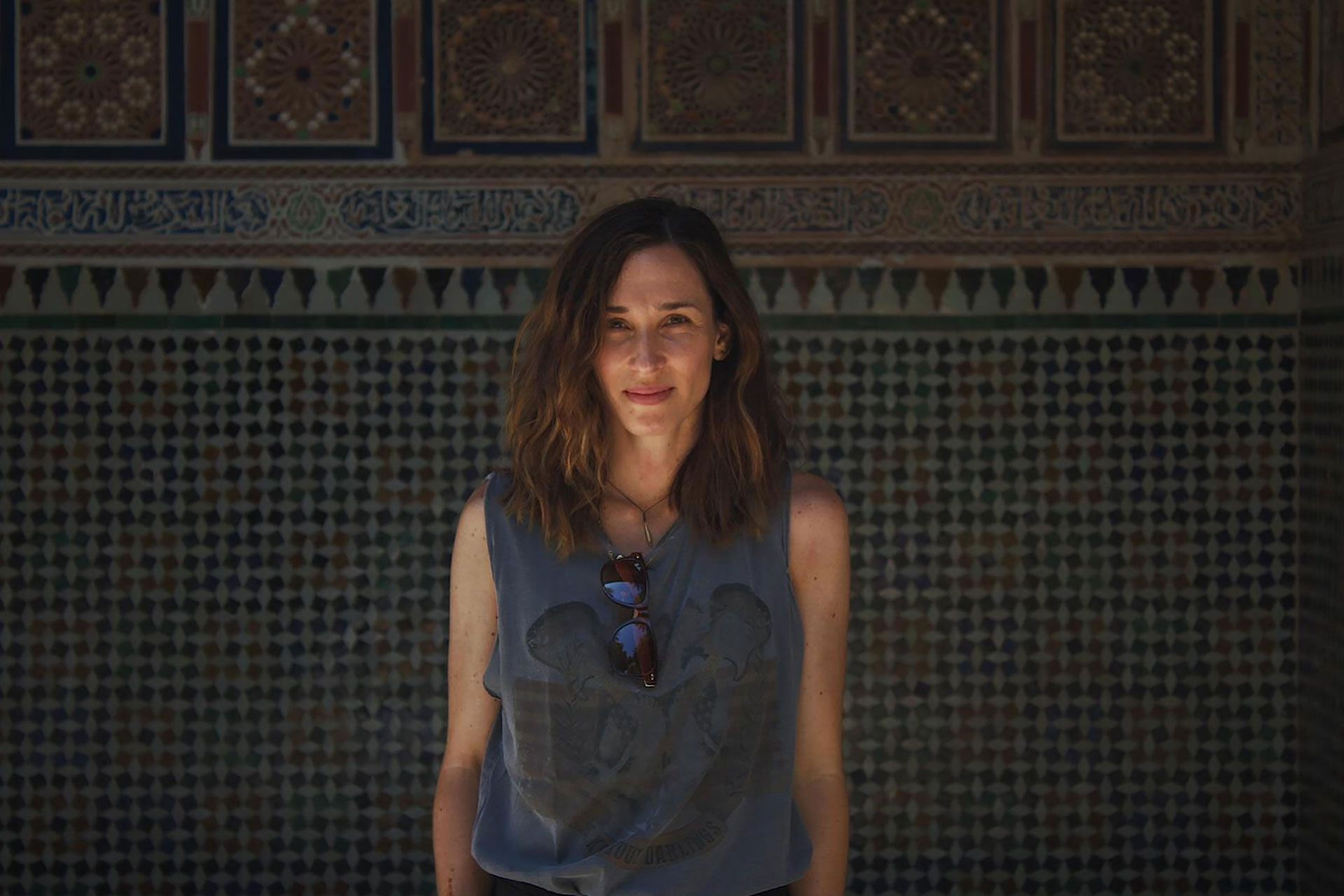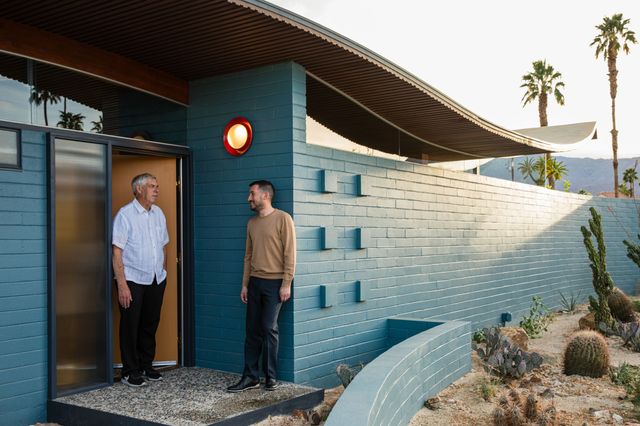
Lucia Corredor and the Rise of Década
The acclaimed Mexican designer explains how her passion for flea-market finds became one of the world's go-to interior design businesses—and why she always travels with an extra suitcase.
- Category
- Spotlight
- Written by
- Roshan McArthur
- Published
- October 3, 2024
Lucia Corredor combines a flair for treasure hunting with a passion for world travel. Whether she’s at home in New York City, at her much-lauded design store in Mexico City, or at the famous art residence on the Oaxacan coast she founded with her husband, artist Bosco Sodi, she’s constantly scouring flea markets and other outlets for unusual finds—and bringing them home with her.
“My kids always complain, ‘Can we just travel with carry-on?’” Corredor laughs. “There's no way. I need to buy things! I always have a second bag inside my luggage. I once bought a desk in Italy, unfolded it, unscrewed it, and brought it in my luggage. I’ve brought carpets, chairs, so many things.”
It’s an obsession that fueled the creation of Década Muebles, the vintage design showroom in La Laguna, CDMX, which she founded with her friend Cecilia Tena in 2010, and which has since blossomed into an AD100-listed interior design business. AD credit the pair with creating “serene and soulful spaces,” saying, “Each of their projects brims with charm and authenticity, featuring works by local artisans and antique treasures that make for eclectic and welcoming spaces.”
At the beginning, people would say, ‘Oh, but this looks like the one that my grandmother had in her living room’
The earliest seeds for Década were planted when Corredor and Bosco Sodi were living in Barcelona. In addition to raising their three children, Corredor ran a relocation service, and clients often asked her to furnish apartments in advance of their arrival. At the same time, she discovered a rich seam of bargain-priced design pieces available in flea markets in Berlin, and started buying them up. When the family moved to New York a few years later, Corredor remembers, “I saw the prices of these same pieces that I was getting in the flea markets for nothing, and I thought, ‘Oh, my God, it's a huge market.’”
At that point, the vintage bug hadn’t hit her native Mexico City, so Corredor and Cecilia Tena brought it to them, filling a showroom with design pieces shipped from Berlin. She laughs, “At the beginning, people would say, ‘Oh, but this looks like the one that my grandmother had in her living room,’ or ‘Why is the leather so worn out?’”
She explained that patina was what made furniture beautiful, and the idea soon caught on.
Making Waves in Oaxaca
Meanwhile on the west coast of Mexico, just outside Puerto Escondido in the state of Oaxaca, a plan for a new art residence and foundation was taking shape. On a patch of untouched coastline between the ocean and the mountains, Sodi, Corredor and celebrated Japanese architect Tadao Ando conceived a grand design for a collaborative art space. Casa Wabi, a vast geometric palapa filled with a who’s who of art installations, opened in 2014 to much acclaim, and was the start of an adventure nobody anticipated.
Corredor remembers what it was like in those early days. “It was completely empty land, and there was nothing around, nothing,” she says. “And when we talked to Tadao about the project, he said, ‘You have to build a hotel next to it, because there will be a lot of people visiting, and you will need some kind of support.’”
As a result, they collaborated with friends to create Hotel Escondido. It was something of a defining moment for Década, showcasing their signature blend of traditional-meets-contemporary interiors. When those same friends (and family members) started buying homes nearby (including Casa Volta, Las Marianas, Casa Cons, Casa Liebre, and Casa Cal), Tena and Corredor put their design stamp on them all.
It’s a community built around Casa Wabi, and one that’s constantly evolving. During the pandemic, Japanese restaurant Kakurega Omakase was added, along with another hotel, Terrestre, both designed by renowned Mexican architect Alberto Kalach.
The most recent arrival is a gallery called Meridiano, created in 2023 by Nicholas Olney of Kasmin Gallery in New York, in collaboration with Belgian designer Axel Vervoordt.
Embracing Simplicity
Corredor credits both Kalach and Vervoordt with influencing her work. “I've learned so much from Alberto Kalach,” she says. “I have had the privilege of spending time with him, as a friend, as an architect, and I like the importance he places on the way of living. Rather than having a huge bedroom, I like how he prioritizes landscaping or the view, how you feel inside your house, the relationship between indoor and outdoor, and the simplicity of the materials.
“As an interior designer, without a doubt, I've learned a lot from Axel Vervoordt,” she adds. “I also had the privilege of meeting him and spending time with him. How he pursues his amazing interiors, and the simplicity of his design, is incredible.”
I've learned through time that architecture and interior design can change your daily life.
Her personal style reflects that same simplicity. “I don't like interiors that are too busy,” she explains. “I prefer timeless interiors. I'm not drawn to too much color either. I like more wabi sabi, more organic things. I've learned through time that architecture and interior design can change your daily life. It doesn't have to be an expensive home. It has nothing to do with spending more money.
"It's more about having plants, having a good source of natural light, and having furniture that speaks to you and has a story behind it.”
Of all the homes which Corredor has worked on recently (and there are many), her favorite is Casa Siza in the Santa Maria la Ribera neighborhood of Mexico City, a personal project which she completed in December 2023, filling it with pieces that she’s been collecting since the early Berlin days.
“I love that house,” she says. “It was built by Álvaro Siza, the Portuguese architect and, as my kids say, you want to stay there. The vibe that the house has is incredible. It has beautiful light, beautiful terraces. I think that's the one that I like the most. It's more me."
Design DNA
In spite of their issues with her in-flight baggage allowance, it seems those kids—Corredor's three young-adult children—have also caught the collecting bug. “We love going to flea markets, all the family,” she says, explaining that their treasures are finding an outlet at another of her recent projects, Red Hook Coffee Shop in Brooklyn.
“It's a really nice coffee shop with vintage second-hand clothes that the kids source, and they sell them there. It also has all these trinkets, accessories and jewelry, or carpets, whatever I find. There have been very strange things in my coffee shop!” she laughs.
Explore the world of Lucia Corredor and Década, with stays at the following homes around the world. Casa Wabi is also available for select bookings; for more information, click here.
Oaxaca, Mexico
STAY: Casa Liebre, Las Marianas, Casa Volta, Casa Cons, Casa Cal
VISIT: Casa Wabi tours, Kakurega Omakase, Meridiano
Mexico City
STAY: Casa Siza
VISIT: Década Muebles (open Monday to Saturday, 10:00AM to 5:00PM)
Tokyo
STAY: Casa Nano
New York
STAY: Casa Lago (Upstate)
VISIT: Red Hook Coffee Shop (Brooklyn)
Folegandros, Greece
STAY: Villa Mariana










